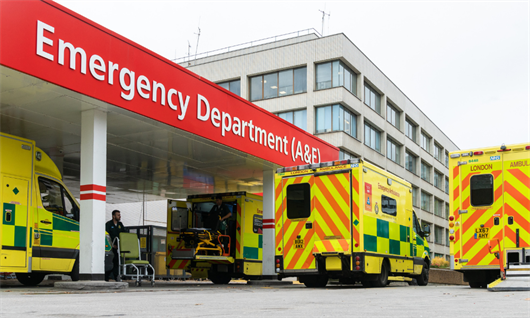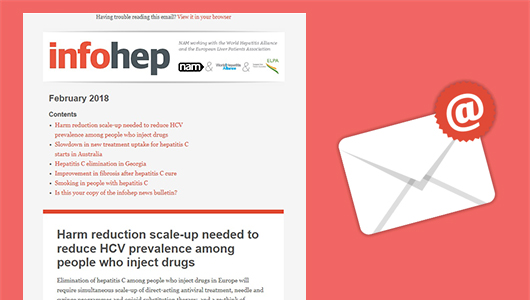Having trouble reading this email? View it in your browser
| |
May 2022 | |
Severe acute hepatitis of unknown cause in children: an updateThe possible causes of cases of severe acute hepatitis in children continue to puzzle scientists and further work is needed to establish whether all countries are seeing unusual levels of severe liver disease in children, a webinar organised by the European Association for the Study of the Liver (EASL) heard this week. An unusual level of cases of severe acute hepatitis in children began to be reported in the United Kingdom in late March. Since then, surveillance in Europe and North America has identified further cases in over 30 countries. It is unclear if the cases have a single cause. Interest focuses on adenovirus infection, especially variant 41, which causes gastrointestinal illness. Another hypothesis is that prior infection with SARS-CoV-2 – or incomplete elimination of SARS-CoV-2 infection – leads to a heightened risk of severe immune reaction to adenovirus infection. Research is also ongoing into potential environmental, drug or toxin exposures. Several proposed causes have been dismissed:
Further careful investigation is needed to test various hypotheses about causes. It is also important to bear in mind that the rise in cases may simply be a consequence of greater vigilance and prompt reporting of cases. A survey of 34 paediatric liver clinics in 22 European countries and Israel, carried out in April, found no increase in the rate of acute liver failure cases in children in the first four months of 2022 compared to the same period in 2019-2021. The European Reference Network on Hepatological Diseases (ERN RARE-LIVER), which links researchers on rare liver conditions, says that the findings of the survey “do not confirm the alarming observations from the UK.” Erika Dufell of the European Centre for Disease Prevention and Control told an EASL webinar that there was considerable variation between European countries and that four out of eight European countries that have examined their data in detail say that the number of cases is above the normal rate. Philippa Easterbrook of the World Health Organization noted that the United Kingdom and the United States account for two-thirds of reported cases so far and “a few countries have reported a signal above the background rate.” UK emergency department screening for viral hepatitis feasible and acceptable
Andrius Kaziliunas/Shutterstock.com Emergency department opt-out screening for viral hepatitis and linkage to care is feasible and resulted in high uptake of testing, researchers from a major London hospital report in the Journal of Viral Hepatitis. But the study also found that linkage to hepatitis C care among people previously undiagnosed was challenging and required a high level of involvement from social services and peer workers to locate people and ensure they remained engaged in care. To investigate the effectiveness and sustainability of testing for viral hepatitis in an emergency department, a cross-departmental research group at Guy’s and St Thomas’ NHS Foundation Trust carried out a study of universal opt-out testing for viral hepatitis and linkage to care in the emergency department at St Thomas’ Hospital, which serves inner south London. During the eleven-month service evaluation, 81,088 people attended the emergency department and 36,865 received a blood test (45%). Of these, 75% accepted hepatitis B testing and 75% accepted hepatitis C testing. A total of 235 people (0.9%) had a positive test for hepatitis B surface antigen, 523 (1.9%) had a positive hepatitis C antibody test result and 261 (0.9%) had a positive hepatitis C antigen result. There was no difference in testing uptake for either hepatitis B or C by age, gender or ethnicity. Whereas half of those diagnosed with hepatitis B were already in care, testing for hepatitis C revealed a high level of unmet need for care and treatment. Linkage to care for hepatitis C proved more challenging than for hepatitis B; only half of those diagnosed could be contacted. The service evaluation found that liaison with local homeless teams and peer support workers with experience of homelessness was essential to locate and engage homeless people in care and maintain their engagement in treatment. The study authors say that emergency department opt-out testing is more likely to be successful in urban settings with good co-ordination between the Emergency department, clinical treatment and community teams, including social services. Related linksUkraine: viral hepatitis and harm reduction services for refugeesThe European Association for the Study of the Liver (EASL), the World Health Organization (WHO) and the European Centre for Disease Prevention and Control have issued a joint statement on viral hepatitis care for refugees from Ukraine. Refugees from Ukraine have been granted temporary protection, including access to health care in European Union countries and other countries in the WHO Europe region. The statement highlights the need for viral hepatitis care in refugee populations. The rate of hepatitis B birth vaccination is lower in Ukraine than most European Union countries – only 80% of infants had received their third dose in 2020. Adult prevalence of hepatitis B is around 1% and adult hepatitis C prevalence is 3%. Prevalence of both viruses is higher in men and older age groups. Prevalence in people who inject drugs is especially high (HBsAg 8%, hepatitis C antibody 56% in 2020). The statement recommends:
For further information on viral hepatitis and harm reduction services for refugees from Ukraine, by country, see our news article on infohep. People with diabetes or heavy alcohol consumption at higher risk of severe fibrosis after hepatitis C cure
SatyaPrem/Pixabay People with diabetes or high alcohol intake after hepatitis C cure are less likely to experience reductions in liver fibrosis after hepatitis C cure and remained at higher risk of severe liver fibrosis while high coffee consumption was associated with a lower risk of severe liver fibrosis, a review of the French HEPATHER cohort has found. The study looked at factors associated with severe liver fibrosis before and after hepatitis C cure. French researchers wanted to identify whether any social or behavioural factors put people at higher risk of severe liver fibrosis and the characteristics of those likely to be at higher risk of severe liver fibrosis after hepatitis C cure. People at higher risk of severe fibrosis after being cured need regular monitoring for progression of liver disease and hepatocellular carcinoma (liver cancer). The analysis included 9692 people who attended a median of two visits during four years of follow-up. The median age of participants was 56 years, 44% were female and 57% were unemployed. Fifty-nine per cent received direct-acting antiviral treatment during follow-up and 96% of those treated had been cured of hepatitis C. Multivariable analysis showed that greater coffee consumption was associated with a substantial reduction in the risk of severe fibrosis, before and after hepatitis C cure. One cup a day reduced the risk by 53% while four cups or more a day reduced the risk by 96%. Hepatitis C cure reduced the risk of severe fibrosis after cure by 90%. The risk of severe fibrosis both before and after hepatitis C cure was four-and-a-half times higher in people with unhealthy alcohol use compared to people who abstained from alcohol use and was three-and-a-half times higher in people who were abstinent at enrolment but had a history of unhealthy alcohol use. The risk of severe fibrosis was four times higher in people with diabetes compared to those without diabetes, before and after hepatitis C cure. Diabetes is known to accelerate the progression of fibrosis. The study investigators say that regular follow-up after hepatitis C cure is especially important for people with a history of unhealthy alcohol use or diabetes. Liver disease status should also be monitored carefully after hepatitis C cure in people with lower socioeconomic status, and coffee consumption should be promoted after hepatitis C cure for anyone with a history of unhealthy alcohol use or diabetes, say the study investigators. Related linksIs this your copy of the infohep news bulletin?
Is this your copy of the infohep news bulletin, or did you receive it from a friend or colleague, or find it online? You can sign up to receive this monthly email bulletin, free of charge, on our website, where you can also find an archive of all the infohep news bulletins. | |
 Latest treatment news and information for patient advocates and people working in hepatitis in Europe. For more details, please contact: To unsubscribe please click here Privacy Policy |





Connect with infohep on Facebook: Keep up to date with all the latest news and developments.
Follow infohep on Twitter for links to news stories and updates from infohep.org. Follow us at www.twitter.com/infohep.
Follow all the infohep news by subscribing to our RSS feeds.